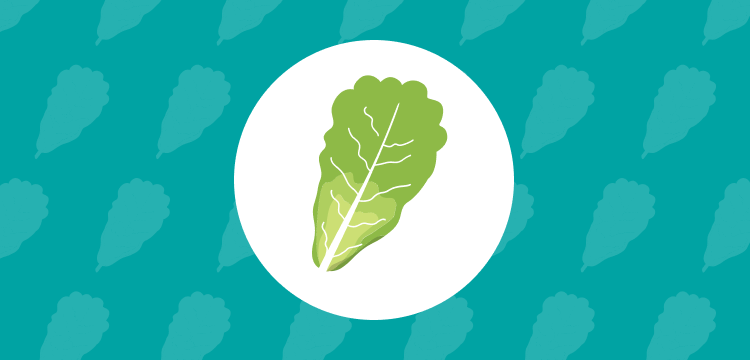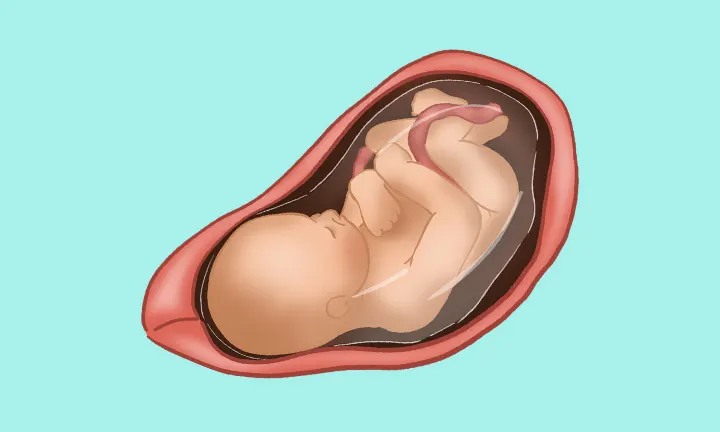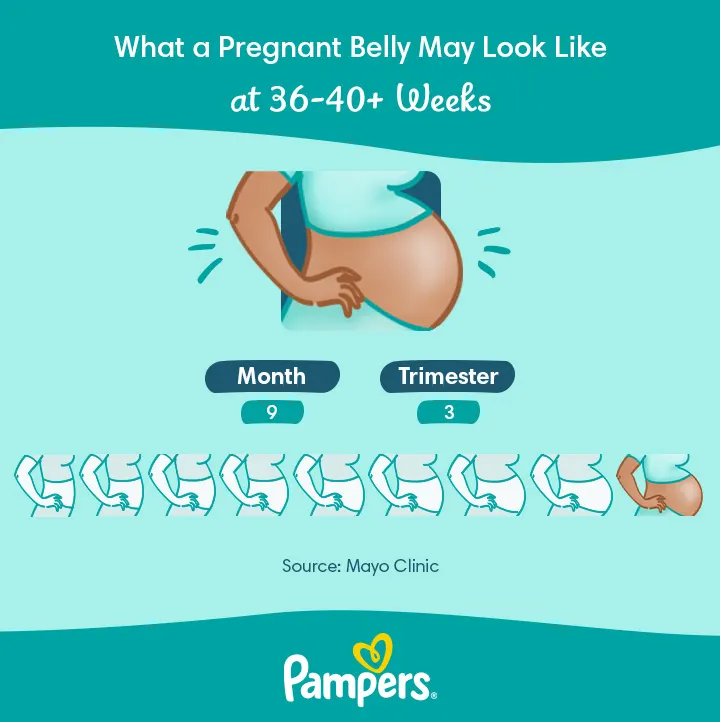36 Weeks Pregnant
36 weeks is here, and that means you’re even closer to meeting your new ray of sunshine! As your body prepares itself for labour and delivery, you might be looking for some more information so that you can be as prepared as possible. Well, you’re in the right place! Read on to discover what your baby is doing around 36 weeks pregnant, the symptoms you may experience, and some tips and guidance on how to prepare for labour and your new arrival.
Highlights at 36 Weeks Pregnant
Check out just a few of the exciting things that may be happening or helpful at 36 weeks pregnant:
Your baby is about the size of a head of romaine lettuce.
They’re nearly ready to enter the big world, but a little extra time inside your belly is always helpful.
Around 36 weeks, you may feel your baby settle into a head-down position in your pelvis. This is sometimes called ‘engagement’ or ‘lightening,” as the process may release some pressure from your lungs and diaphragm.
Now might be a good time to familiarise yourself with the signs of labour. Find out more further on in our article
Still seeking a name that feels ‘just right’ for your little one? If you need a little inspiration, try our Baby Name Generator below:
BABY NAME GENERATOR TOOL

Baby name generator
By gender:
By theme:
Your Baby’s Development at 36 Weeks Pregnant
With only about four weeks left until your due date at the end of 40 weeks, your little one is almost ready to venture out into the world. Here are some of the big steps they’re making this week in preparation:
The longer your baby gets to spend growing and developing inside your uterus the better, but it’s reassuring to know that your little one’s lungs and digestive system are now fully developed.
This means that – although your little one will continue to get all nutrients and oxygen from you via the placenta right up until the moment of delivery – they’re equipped to take those first breaths and start feeding whenever they are born.
Still, any baby born before 37 weeks is considered premature, and may need to be given special care, so it’s good to know some symptoms not to ignore 36 weeks pregnant that might signify premature labour.
Signs of labour may include an unusual discharge. If you notice a pink or clear mucus coming from your vagina, it could be a ‘show.’ The ‘show’ is when the mucus plug that has sealed your cervix during your pregnancy dislodges and comes out before labour begins.
A regular tightening of your belly, constant lower back pain, cramps or period-like pains can also be signs of labour.
Other less obvious symptoms like vomiting, diarrhoea or nausea may also signal that you’re about to start going into labour.
If you notice any of these signs at 36 weeks pregnant or later, let your midwife or doctor know straight away.
36 Weeks Pregnant in Months
How many months is 36 weeks pregnant? Although the 40 weeks of pregnancy don’t fit neatly into months, at 36 weeks pregnant, it’s likely you’re at the beginning of your ninth month now.
Your Baby's Size at 36 Weeks Pregnant
Now that you’re 36 weeks pregnant, your baby is about the size of a romaine lettuce, measuring close to 47.4 centimetres from head to heel. Your baby’s weight in kg at 36 weeks pregnant may be around 2.6 kilograms (5.7 pounds).
Your Baby: What Does 36 Weeks Pregnant Look Like?
Although your doctor would be able to confirm how your baby is positioned this week, here’s a general illustration of what your little one might look like and how your baby may be positioned at 36 weeks.
Your Body at 36 Weeks Pregnant
You may have an antenatal appointment coming up at around 36 weeks pregnant, where you’ll be given important tests that can pick up on early signs of any problems such as the high blood pressure condition pre-eclampsia, which – although rare – can be very serious if left untreated.
No matter how many months pregnant you are, these appointments are a great opportunity to ask any questions you might have. Also, with your due date fast approaching fast, it’s a good idea to talk to your doctor about the two main types of birth: Vaginal delivery and caesarean section. Read our section below for more information.
Methods of Childbirth
You may be expecting to give birth vaginally, which is when regular contractions and the gradual dilation (widening) of your cervix cause your foetus to move naturally through the birth canal, and eventually out through the vagina.
On the other hand, you may choose or be advised to have a planned caesarean section. In some cases, it could be necessary to have a caesarean section if a complication arises at any time before or during labour.
A caesarean section is where a cut is made in your stomach, and the baby is delivered through this opening, which is then stitched up again. After a caesarean, you’ll be given an injection of oxytocin – a hormone that’s produced by your body naturally during a vaginal birth – to help your uterus contract and to reduce blood loss.
Both these types of birth have different risks and benefits for you and your little one. Which option is safest or optimal for you depends on your situation and other factors specific to your pregnancy. Your doctor will discuss your options with you and be able to make a recommendation as well.
Whichever kind of birth you expect to have, it’s a good idea to learn as much as you can about both types now and keep an open mind. If an unexpected complication makes it necessary to change plans at the last minute, there might not be time to ask detailed questions.
Your Symptoms at 36 Weeks Pregnant
Here are some of the symptoms you may be experiencing at 36 weeks pregnant:
Braxton Hicks contractions. If you’ve noticed the occasional tightening of your bump, lasting for 20-30 seconds, you’re most likely experiencing Braxton Hicks or ‘practice’ contractions. Unlike true labour contractions, these don’t come at regular intervals and may be uncomfortable, but not painful. If you start getting regular or painful contractions, or if you notice any other possible signs or symptoms of labour – like an unusual ischarge, constant lower back pain, abdominal cramps, period-like pains, diarrhoea or nausea at 36 weeks pregnant or onwards – let your doctor or midwife know straight away.
Frequent urination. The urge to pee more often than usual is common in all stages of pregnancy, but at 36 weeks pregnant your little one’s head could be pushing down on your bladder, resulting in even more frequent trips to the toilet. It’s important to stay hydrated, so don’t be tempted to counter this by drinking less. Cutting down on caffeine-based drinks is a good idea though. If night-time visits to the loo are interfering with your sleep, try not to have your last drink of the day just before you go to bed. You could also try rocking back and forth when you’re on the toilet. Many pregnant people find that this relieves the downward pressure, helping the bladder to empty properly.
Leaky bladder. Don’t be embarrassed if you can’t stop the occasional trickle of pee from leaking out when you cough, sneeze or laugh. This is very common among pregnant people, and now that you’re 36 weeks pregnant the feeling of pressure down below on your bladder may be increasing as your little one continues to gain weight. It could also be due to the pelvic floor muscles relaxing as your body starts preparing for delivery, which is why doing pelvic floor exercises can help. It’s never too late to start doing these simple muscle clenches, which are also recommended as a great way of getting in shape for labour and delivery.
Lightening. Any discomfort you may be experiencing due to frequent urination or a leaky bladder could come with an upside: If it hasn’t happened already, at any time in the weeks leading up to your due date, your little one’s head may move down into your pelvis in preparation for birth. This event is sometimes referred to as ‘lightening’ or ‘engagement’ because it takes some of the pressure off your lungs and stomach, perhaps bringing some welcome relief from any heartburn or shortness of breath that you might have been experiencing before 36 weeks pregnant.
What Size is a Pregnancy Bump at 36 Weeks?
Around 36 weeks pregnant, your doctor will likely measure the size of your bump and check that everything is on track. Your bump may have reached its full size by this week or in the next week or so. This extra weight and size around 36 weeks pregnant may lead to some of the uncomfortable symptoms we listed above.
What Does 36 Weeks Pregnant Look Like?
Every baby bump is different, but here’s an idea of how your belly may look around 36 weeks pregnant.
Things to Consider at 36 Weeks Pregnant
As you get closer to your exciting big day, you may want to ensure that you have everything in order before your new arrival. Here are a few things to consider at 36 weeks:
If you’ve been meaning to make a birth plan, but haven’t got around to it yet, now could be the ideal time. A birth plan is essentially a list of your preferences relating to any aspect of your labour and childbirth, such as pain relief or the birthing positions you’d like to try. It’s also a great way of focusing your mind on the important issues, especially with your due date getting closer at 36 weeks pregnant. Discussing your birth plan with your doctor, midwife, birth partner and doula can help make sure that you’re all on the same page when the time comes. Keep in mind that childbirth can be unpredictable, so your birth plan can’t be set in stone. Try to keep an open mind and be ready to ‘go with the flow’ if the need arises.
Are you getting the ‘nesting instinct’? It’s not scientifically proven, but many pregnant people say that they feel a sudden urge to make everything neat and tidy in the last few weeks of their pregnancy. Partners sometimes get it too! As long as you don’t overdo it, you could use this spurt of energy to tick some things off your newborn baby checklist, stock up on nappies and wipes, such as Pampers Harmonie New Baby wipes or perhaps put the finishing touches to your baby’s nursery.
Unless your doctor told you otherwise, gentle exercise is still safe and good for you in the third trimester, as long as you avoid contact sports or exercises that carry a risk of falling or losing your balance, like skating. Swimming is a great way of keeping in shape, especially in these later weeks of your pregnancy or if you’re experiencing pelvic pain and it hurts to walk at 36 weeks pregnant. The water supports the weight of your body and bump, easing any pressure on your joints. Ask if your local pool or sports centre offers ‘aquanatal’ classes, but don’t forget to let the instructor know how many weeks or months pregnant you are.
As your due date nears, here’s a collection of articles to read to help you get an idea of the kinds of things to look out for and expect as you go into labour:
Tip for Partners It might be a good idea to get prepared for after the birth by stocking up on all the essentials for your new baby and your family. Why not precook and freeze some nutritious meals? This can save you some time when your baby is home and lets you focus more on quality family time. |
Questions for Your Doctor at 36 Weeks Pregnant
At your 36-week appointment, you might consider asking your doctor or midwife some of the following questions:
If I have a chronic condition, will any aspect of labour or childbirth need to be adjusted to lower any risks associated with the condition?
What exercises are safe for me at this stage of my pregnancy?
Am I at a high risk of pre-eclampsia?
Are there any vitamin supplements I need to take at this stage in my pregnancy?
Will I be tested for group B streptococcus (GBS), and what happens if the result is positive?
What are some symptoms not to ignore at 36 weeks pregnant?
FAQS AT A GLANCE
While babies born at 36 weeks are generally healthy, they are considered ‘early term’ or ‘preterm,’ and it is usually better for them to stay in the womb until at least 39 weeks, if possible. This allows for further growth and development.
36 Weeks Pregnant: Your Checklist
As your due date draws near, here are some to-dos you might like to consider:
It might be tempting to rely on GPS these days, but not even the best technologies are 100 percent reliable. Learn the best route to the hospital or birthing centre by doing some practice runs so that getting there becomes second nature. Don’t forget to find out where you need to go inside the building once you get there.
Learn about your options for feeding your newborn baby after the birth, by discussing both breastfeeding and formula feeding with your midwife or lactation consultant.
Stock up on nappies and wipes. Plus, make sure you have everything you need for all those nappy changes you’ll be doing, including things like nappy rash cream, a nappy pail and a changing mat to top your changing table with.
Use our checklist to pack your hospital bag with all the stuff you might need at the hospital or birthing centre. It may seem early now, but there’s no way of knowing exactly when your labour will start. Getting everything ready now can save you a lot of frantic searching for things to throw into a bag at the last minute.
How We Wrote This Article The information in this article is based on the expert advice found in trusted medical and government sources, such as the National Health Service (NHS). You can find a full list of sources used for this article below. The content on this page should not replace professional medical advice. Always consult medical professionals for full diagnosis and treatment.



